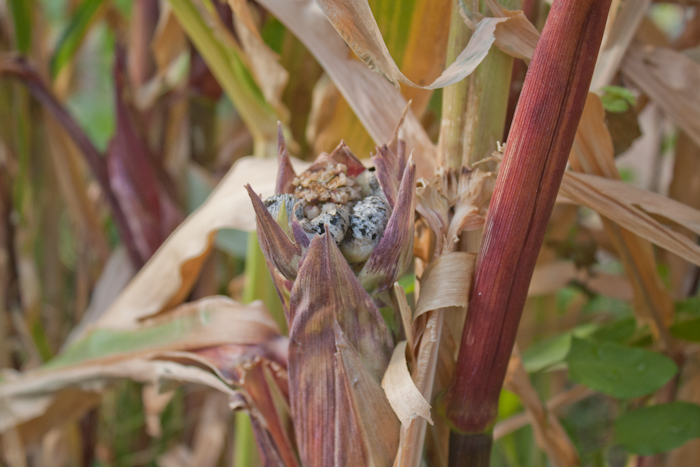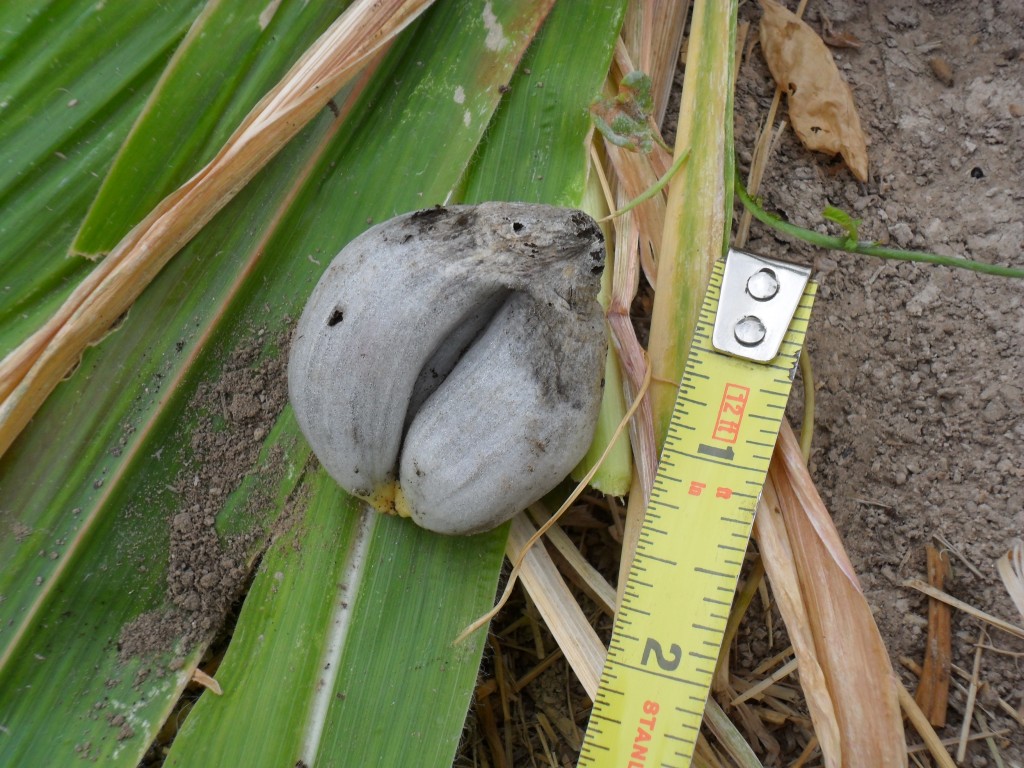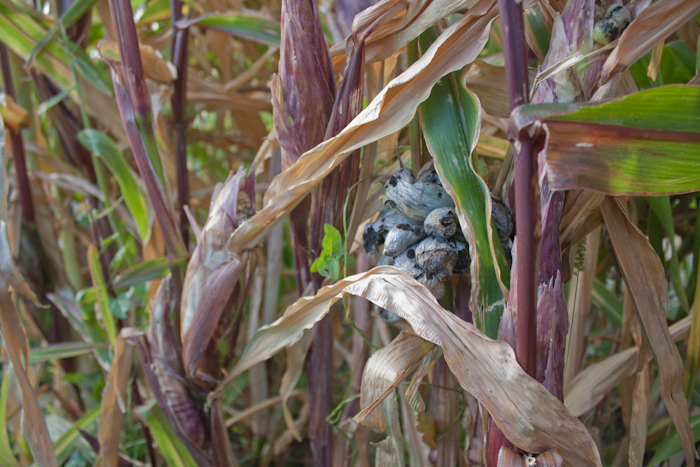
This afternoon, after a long awaited rain finally hit (possibly redeeming local weather forecasters), I discovered that my small plot of maize is suffering from an infestation of Smut. In researching this Smut I discovered that Idaho grain farmers are facing a new disease potentially more harmful, because it is attacking wheat & barely as well as corn.

Smut infected corn kernel. Some South Americans eat this.
Smut is a common corn fungus. It looks almost like the maize had been popped right in the husk. It’s nasty looking, the puffed corn kernels turning black as the fungus progresses. According to some sources, South Americans like to eat the young Smut galls as a delicacy.
I’ve grown maize for several years now, changing the location in my backyard field every year, but I’ve never had this problem. Turns out that weather plays a big role in the growth of Maize Smut. The weather factors are; cooler than normal temperatures, and dryer than normal conditions during the growing season (ipm.illinois.edu). That’s exactly what we’ve had this year in South East Idaho.

Maize Smut, Chubbuck, Idaho.
This is no problem, corn Smut shouldn’t cause a food crisis. But, in my research I discovered that, for the first time, the Pacific Northwest is being hit by a crop disease that attacks maize, wheat & barely. Earlier this year it was discovered in the Magic Valley of Idaho.
It is a type of Fusarium (not associated with Corn Smut), a fungus that is common in soil, but this particular version is dangerous to crops, and people. The Soviet Union actually developed a strain of Fusarium into a biological weapon during the Cold War (en.wikipedia.org).
According to the University of Idaho, Idaho is getting hit with this strain because of increased corn production (thank you ethanol). After the maize is harvested, Fusarium hangs around in the soil, attacking any wheat or barley planted in the same field. The U of I recommends not planting other grain crops in the same field that corn was grown. Also, plow under the field and spray with fungicides. As with Smut, cooler than normal temperatures promote Fusarium growth. (www.capitalpress.com)
Just one more concern over the coming food crisis.


